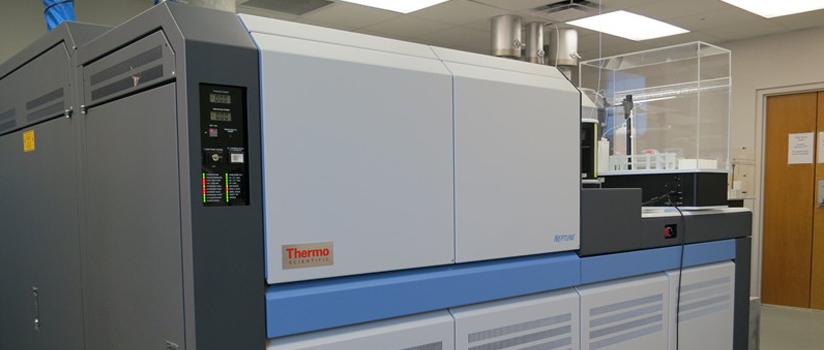Core Facilities
The Center for Elemental Mass Spectrometry (CEMS) is a core analytical facility and cost center at the University of South Carolina. The focus of our research is geochemistry and chemical oceanography. Plasma-source mass spectrometers are the heart of CEMS. We use these for trace metal and isotope ratio measurements on a wide variety of sample types. Explore these pages if you have an interest in our work, and please contact us if you have questions, ideas, or comments.
The Electron Microscopy Center at the University of South Carolina is a core facility providing all levels of technical support and consultation in the area of light microscopy, electron microscopy, and elemental analysis. The center provides microscopy and specimen preparation services for biological and materials science research. In addition, the center offers necessary training and access to all microscopes and ancillary equipment
Three faculty in the SEOE separately operate stable isotope mass spectrometers (IRMS) for the isotope (13C, 15N, 18O) analysis of carbonates, water, bulk organic solids and liquids, individual organic molecules, dissolved organic and inorganic nitrogen, and gases. The Benitez-Nelson lab houses a Thermo DeltaQ connected to a Gasbench and Elemental Analyzer. It also has an Elementar Isoprime connected to a multicarbonate sample prep module and a EuroVector Elemental Analyzer (EA); the latter instrument was formerly in the Thunell lab. The Bourbonnais lab houses an Elementar PrecisION connected to Vario PYRO cube and a custom online gas extraction and purge-trap system, as well as a Bay Instruments Membrane Inlet mass spectrometer.
The instruments have supported the core research of these faculty members, and are regularly operated by graduate and undergraduate students carrying out research within their labs. A graduate class in Stable Isotopes is taught every other year (by Bourbonnais or Lang) and also trains SEOE students on these instruments to a limited degree. Internal and external users can analyze samples on a fee-per-service basis.
This dedicated facility in Coker Life Sciences 007 consists of equipment and instruments capable of disaggregating, cutting, separating, powdering, drying, fusing, and polishing rocks and sediments. Undergraduate student, graduate student, faculty and guest researchers use a Bico Braun WD Chipmunk jaw crusher, Bico Braun UA Pulverizer disc mill, and custom-built steel mortar and pestle to disaggregate rocks. This equipment is housed in dedicated dust-prevention bays with auxiliary high-volume vents, down-draft tables and air curtains to improve user safety and minimize sample contamination risks. A suite of three rock saws enable the cutting of rocks for slabs or thin section billets and are served by dedicated water lubrication lines as needed. A Hilquist machine enables the creation of thin-sections, and a lap wheel, Buehler Minimet auto-polisher and a suite of powders and sandpapers enable the polishing of slabs, billets, thin sections, and grain mounts. An MD Mineral Technologies MK-2 Gemeni shaking water table is used to separate sediments and disaggregated rocks by their density and other hydrodynamic characteristics. Further separation by grain size and density is enabled by full suites of sieves, nitex mesh, and ABS Garrett-type gold pans. Two ovens enable the drying of processed samples. Magnetic separation is achieved with an SG Frantz LB-1 isodynamic magnetic laboratory separator. Heavy liquid mineral separations using methyelene iodide, or lithium and sodium tungstate solutions are achieved using separatory funnels, and appropriate plastic- and glass-ware and cryogenics for the ‘ice-cube’ method. A dedicated hood is used for acid digestions and toxic heavy liquid use. A Nikon SMZ-1500 zoom stereomicroscope with plane-polarized and cross-polarized filters enables the documentation and picking of minerals. Adhesives and resins enable the creation of mineral mounts.
